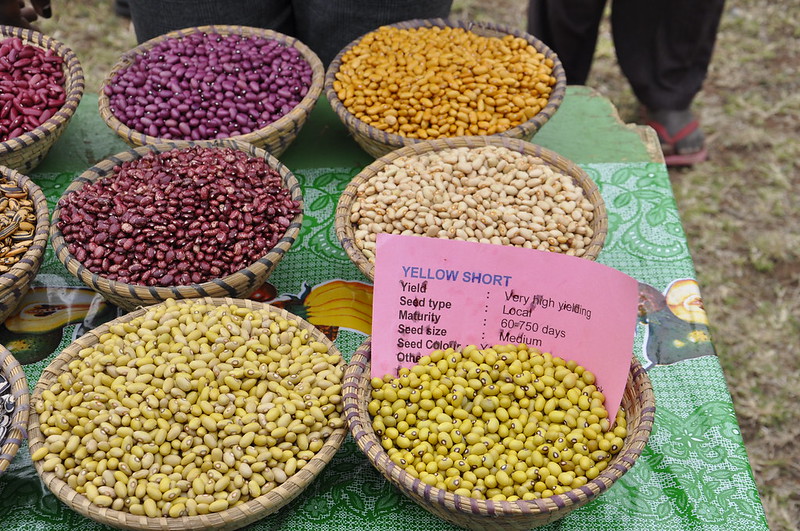Despite legumes’ nutritious value, consistency in cultivation and consumption is still a challenge in some of the varieties in SSA. Nutrition awareness on what legumes offer in human health is an area to intervene and create a clear understanding on health benefits of legumes while developing various recipes to increase utilization.

On the other hand, climate change is threatening our food system, causing a rise in food insecurity. Food insecurity affects the livelihoods and health of the population, causing an increase in malnutrition. The higher the increase in malnutrition, the higher the impact on the economy of the nations. This is vicious cycle that requires sustainable interventions. The global population is on the rise, with an expected population of 9.6 billion people by 2050, which will also create more demand for food. In this context, the seven letters (L.E.G.U.M.E.S) can deliver multiple benefits to human, animals and to the soil. Legumes can offer food to human and animals and help to fix atmospheric nitrogen.

It is time to strengthern the agriculture policies, and promote collaboration among sectors to ensure sustainable production and market of legumes. In addition, availability of affordable inputs such as certified seeds, irrigation equipments can boost legume production. Availability of biofortified legumes seeds (iron, and zinc) can help to minimize the nutrition deficiencies in the community. A sustainable market can create exploitation of underutilized legumes by smallholder farmers. Regardless of abiotic and biotic stresses that affects the production of legumes, farmers can be trained on good intercropping systems that will enable them to observe plant spacing and select the crops to intercrop with legumes for better yields.
All for now, thank you.
Get to know more here:
- Multiple benefits of legumes for agriculture sustainability: an overview
- Trends in the Production, Trade, and Consumption of Food-Legume Crops in Sub-Saharan Africa
- Jayathilake, C., Visvanathan, R., Deen, A., Bangamuwage, R., Jayawardana, B. C., Nammi, S., and Liyanage, R. (2018). Cowpea: an overview on its nutritional facts and health benefits. Journal of the Science of Food and Agriculture 98, 4793-4806.
- Gaur, P. M., Tripathi, S., Gowda, C. L., Ranga Rao, G., Sharma, H., Pande, S., and Sharma, M. (2010). Chickpea seed production manual.
- Popoola, J., Ojuederie, O., Omonhinmin, C., and Adegbite, A. (2019). Neglected and underutilized legume crops: Improvement and future prospects. In “Recent advances in grain crops research”. IntechOpen.
- Popoola, J. O., Aworunse, O. S., Ojuederie, O. B., Adewale, B. D., Ajani, O. C., Oyatomi, O. A., Eruemulor, D. I., Adegboyega, T. T., and Obembe, O. O. (2022). The Exploitation of Orphan Legumes for Food, Income, and Nutrition Security in Sub-Saharan Africa. Frontiers in Plant Science, 1454.